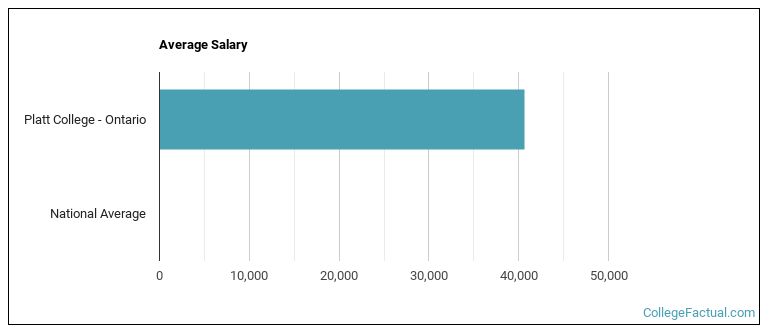 by our College Data Analytics Team
by our College Data Analytics TeamExplore the best ranked schools for the programs you are most interested in.
Platt College - Ontario landed the #2,121 spot in College Factual's 2025 ranking of best overall colleges in the United States. The higher ed experts analyzed 2,152 colleges and universities across the nation to determine this ranking. This is an improvement over the previous year, when Platt College - Ontario held the #2,163 spot on the Best Overall Colleges list.
Platt College - Ontario also holds the #157 spot on the Best Colleges in California ranking.
As long as you meet basic requirements, you should not have any trouble getting into Platt College - Ontario since the school has an open admissions policy. Still, be sure to submit any requested materials and that your application is completed in full.
The student to faculty ratio at Platt College - Ontario is 21 to 1, which is high when compared to the national average of 15 to 1. This may indicate that some of your classes will be larger in size than they would be at other schools. However, upper level classes will probably be smaller.
In addition to the student to faculty ratio, some people look at what percentage of faculty members are full-time as a sign of how much time professors will be able to spend with their students. This is because part-time teachers may not be be on campus as much as their full-time counterparts.
The full-time faculty percentage at Platt College - Ontario is 31%. This is lower than the national average of 47%.
During the 2017-2018 academic year, there were 522 full-time undergraduates at Platt College - Ontario.
The net price is calculated by adding tuition, room, board and other costs and subtracting financial aid.Note that the net price is typically less than the published for a school. For more information on the sticker price of Platt College - Ontario, see our tuition and fees and room and board pages.
Almost 66% of college students who graduated with the class of 2018 took out student loans, but that percentage varies from school to school. At Platt College - Ontario, approximately 86% of students took out student loans averaging $8,393 a year. That adds up to $33,572 over four years for those students.

See which majors at Platt College - Ontario make the most money.
Get more details about the location of Platt College - Ontario.

Contact details for Platt College - Ontario are given below.
| Contact Details | |
|---|---|
| Address: | 3700 Inland Empire Boulevard, Ste 400, Ontario, CA 91764 |
| Phone: | 909-941-9410 |
| Website: | www.plattcollege.edu/ |
| Most Popular Majors | Bachelor’s Degrees | Average Salary of Graduates |
|---|---|---|
| Allied Health Professions | 120 | $26,939 |
| Veterinary/Animal Health Technologies/Technicians | 28 | NA |
| Design & Applied Arts | 17 | NA |
| Health & Medical Administrative Services | 16 | NA |
| Criminal Justice & Corrections | 15 | NA |
| Allied Health & Medical Assisting Services | 14 | NA |
| Computer Information Systems | 9 | NA |
| Business Administration & Management | 4 | NA |
| Security Science and Technology | 1 | NA |
Online learning options are becoming more and more popular at American colleges and universities. Online classes are great for students who have busy schedules or for those who just want to study on their own time.
In 2022-2023, 36 students took at least one online class at Platt College - Ontario. This is an increase from the 0 students who took online classes the previous year.
| Year | Took at Least One Online Class | Took All Classes Online |
|---|---|---|
| 2022-2023 | 36 | 0 |
| 2021-2022 | 0 | 0 |
| 2020-2021 | 0 | 0 |
| 2018-2019 | 0 | 0 |
Learn more about online learning at Platt College - Ontario.
If you’re considering Platt College - Ontario, here are some more schools you may be interested in knowing more about.
Curious on how these schools stack up against Platt College - Ontario? Pit them head to head with College Combat, our free interactive tool that lets you compare college on the features that matter most to you!
Footnotes
*The racial-ethnic minorities count is calculated by taking the total number of students and subtracting white students, international students, and students whose race/ethnicity was unknown. This number is then divided by the total number of students at the school to obtain the racial-ethnic minorities percentage.
References
More about our data sources and methodologies.